Table of Contents
Introduction to Horse Breeds
Horses have been among mankind’s favorite and most cherished companions for centuries, cherished for their strength, intelligence, and loyalty.
From the primitive warfields of ancient times to the modern sporting grounds and tranquil farmland today, horse breeds have enriched human society in unique manners.
Educating oneself about these horses is not simply a process of looking at how beautiful they are — it is a process of discovering about their diverse origins, characteristics, and contributions to society.
Each horse breed has a story that combines genetics, geography, and human purpose into an amazing heritage that just keeps expanding today.
Throughout history, selective breeding has created hundreds of different horse breeds, all for a specific purpose such as racing, agriculture, transport, or companionship.
There are certain breeds that are renowned for their immense strength and stamina, and others for their agility, temperament, and their beauty. These, the Shetland Pony is one of the little but strong symbolisms of staying power, which is a huge surprise to its owners with its incredible power proportional to its size.
In this blog, we’ll explore six powerful and fascinating horse breeds from around the world — each offering something special to farmers, riders, and enthusiasts alike. You’ll discover their unique traits, their roles in agriculture and sports, and how they continue to enrich lives globally.
Whether you’re a student learning about animal husbandry, a horse owner, or simply an admirer of equine beauty, this comprehensive guide will deepen your understanding of these magnificent creatures.
The Importance of Horse Types
Information regarding different horse types isn’t simply an academic exercise – it’s a key to better care, breeding, and utilization. Farmers who are aware of horse types are able to choose breeds best suited to their land, weather, and purpose.
Similarly, horse professionals are able to increase training outcomes by matching a horse’s temperament and physical ability to a suitable activity.
The Role of Horse Type to Farming and Life
The diversity of horse breed reflects the many roles horses play in human society. Horses are employed to haul heavy loads, till fields, or to race, endure, or exhibit.
For example, the draft breeds such as the Clydesdale are good for heavy farm work, but lighter horses such as the Arabian are of greatest value for speed and agility.
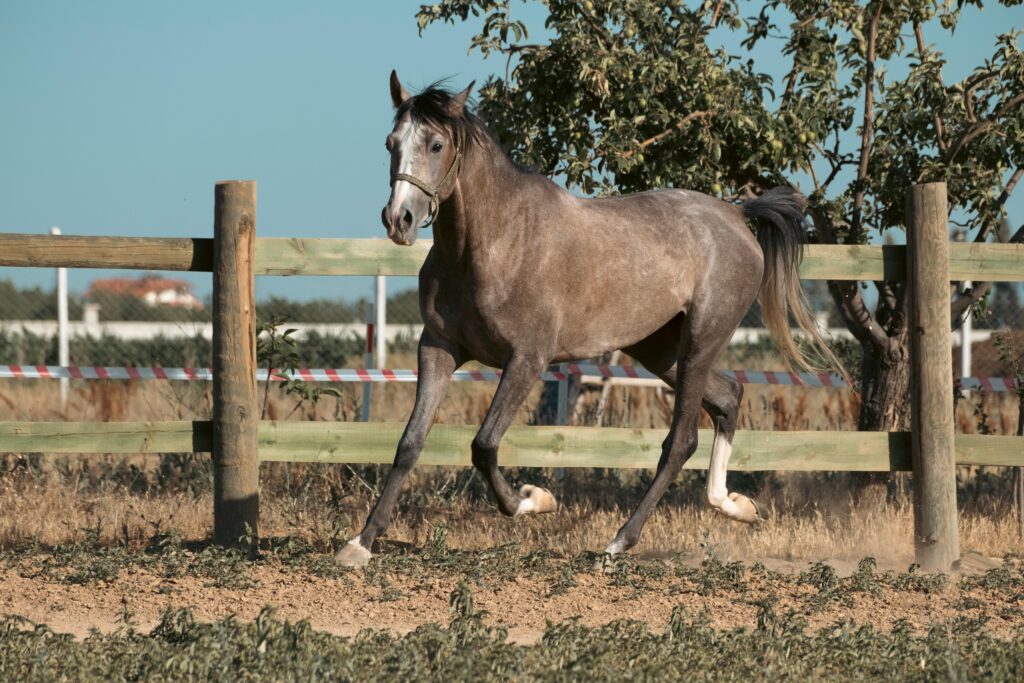
On the other hand, the Shetland Pony, in its compact form, is an all-around horse breed used extensively for the riding of children and light labor on difficult terrain. The breed ensures that every horse lover or farmer will be able to find the perfect fit for their needs.
Benefits of Studying and Choosing the Right Horse Breeds
Selecting the right horse breeds not only has practical but also economic benefits. From higher productivity at work on farms to competitive athletics, having the knowledge of what sets each breed apart can make a huge difference.
1. Higher Efficiency and Work Output at Farms
Several horse breeds have their unique physical capabilities. Heavies such as the Belgian Draft or Percheron can carry massive loads and work for long periods without showing any signs of fatigue. To farmers, getting the right horse type can conserve time, reduce strain on the animal, and increase farm efficiency overall.
2. Better Health and Longevity
Every breed possesses intrinsic health requirements, and knowing them ensures more nutritious diet, training, and overall well-being. For example, the Shetland Pony excels under cold climates and eats less than larger breeds, and therefore, it is a low-maintenance option for small-scale farms or for new farmers.
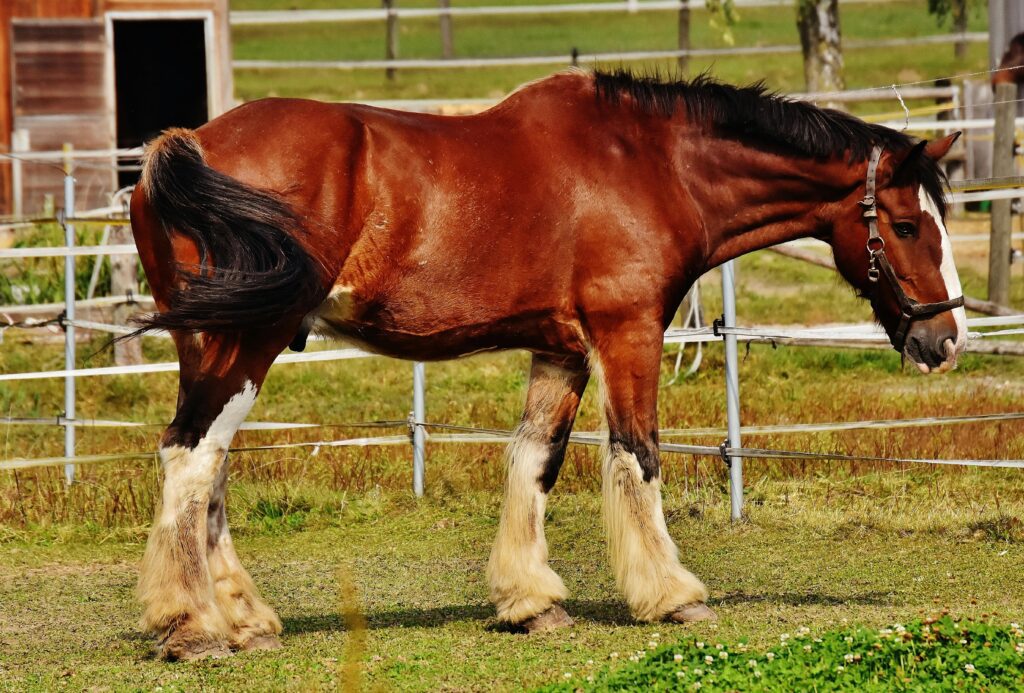
3. Better Training and Versatility
Knowledge of your horse’s breed characteristics can help with the tailoring of training methods. Arabian horses, for instance, thrive with endurance training, while Thoroughbreds need systematic speed training. Knowing such natural tendencies makes the human-animal connection more intimate.
6 Powerful & Interesting Horse Breeds
Let us now find six legendary horse breeds that capture the diversity, prowess, and beauty of the equine world. Every one of these breeds expresses unique strengths which make them valuable for different purposes — from the tranquil robustness of draft horses to the hot-head nature of ponies like the Shetland Pony.
1. Arabian Horse – The Endurance Champion
The Arabian horse is an extremely ancient and renowned breed of horse that is found all over the globe. It has originated in the Arabian Peninsula. It is renowned for its long endurance, intelligence, and loyalty. The typical arched neck, refined features, and high tail carriage of Arabians add to their appearance of elegance and nobility.
Its most striking feature is its unimaginable endurance. Arabians can go a long distance on minimum food and water in harsh desert weather. Due to this, they are a favorite among endurance riding competitions and long-distance travel.
They are also said to be gentle in disposition, thus suitable for all classes of riders. To farmers and breeders, Arabian horses are attractive not only for appearance but also because they can impart strength and hardness to offspring.
2. Thoroughbred – The Speed Icon
Racing-wise, the Thoroughbred is a class unto itself. This breed hails from England and was developed strictly for speed and acceleration. Long legs, deep chest, and solid hindquarters define the Thoroughbred, which is built to go like the wind at enormous velocities on race courses.
One of the world’s greatest horse breeds, the Thoroughbred is an international symbol of racing temperament and athletic ability. The horses require high-protein diets and frequent exercise to maintain their best condition.
Their spirited nature does require careful handling and training, however. Aside from racing, Thoroughbreds are often used in show jumping, dressage, and eventing due to the fact that they are intelligent and cooperative animals.
3. Clydesdale – The Gentle Giant
Prized for their size and strength, Clydesdales are one of the world’s most well-known horse breeds. Hailing originally from Scotland, these horses were initially bred to carry out heavy farm work and hauling cargo. Today, they are usually seen showing up at parades and promotional events due to their stunning appearance and tranquil demeanor.
Clydesdales are wide bodied, feathered-legged, and possess a powerful, muscular build, and therefore are ideal for pulling heavy wagons and farming tools. Clydesdales are also friendly and tolerant, and thus the ideal horse for a novice.
Though big in size, Clydesdales are gentle and willing, and they are both power and gentleness personified by equines.
4. Appaloosa – The Spotted Marvel
The Appaloosa horse breed is extremely attractive and recognized by its unique spotted coat patterns. The Appaloosa originated in North America and was bred by the Nez Perce Indians. The Appaloosa horse breed is well appreciated for being intelligent, active, and highly durable. The multi-colored skin and strong eyes of the Appaloosa make it well recognized wherever it is.
This horse breed is highly versatile, typically used for western riding, trail riding, and ranching. Appaloosas are also said to be loyal animals that become attached to their owners. They can comfortably live in any type of climate and terrain because they are adaptive. Farmers use this breed due to its ruggedness and low maintenance.
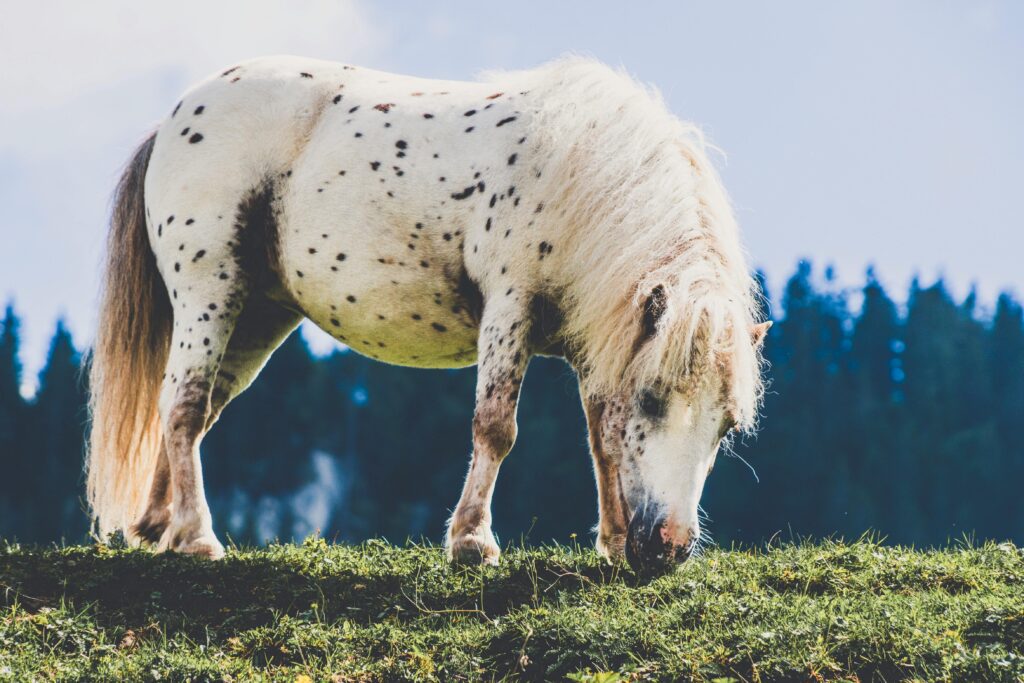
5. Friesian Horse – The Black Beauty of Europe
The Friesian, with its shiny black coat and refined gaits, is one of the most elegant horse breed. Friesians, originating in the Netherlands, are prized for their extended flowing manes, strong conformation, and calm temperament. Their beauty often make them a favorite when it comes to depicting historical movies and royal events.
Other than their looks, Friesians are powerful and agile. They are effective for farm work as well as carriage driving. Friesians are also sought after for dressage and show riding because they possess natural elegance and rhythm. Being intelligent and also wanting to please, they are heaven for a trainer and a rider. Friesians. A perfect blend of power, beauty, and heritage.
6. Shetland Pony – The Mighty Miniature
Shetland Pony is one of the smallest but most tough horse breeds in the world. They come from the rugged Scottish Shetland Islands and were developed to endure poor weather and poor food. Extremely powerful yet small, the Shetland can pull or carry loads that are far beyond one’s expectations.
This breed of horse is commonly utilized for kids’ riding lessons, farm chores, and even for therapy programs. Their brilliance and sometimes playfulness also make them entertaining yet lovable. Shetland Ponies are low maintenance, so they are ideal for first-time owners or small families with limited areas. They represent the notion that one does not have to be big to be strong.
Challenges in Managing Different Horse Breeds
While it may be rewarding to raise and breed horses, working with various horse breeds also has its downfalls. Each type of horse comes with its own health, dietary, and behavioral needs that must be met for the animal’s well-being.
1. Variations in Feeding and Nutrition
Horses are not all alike when it comes to diet. The Shetland Pony, for example, requires less to eat and will become greatly overweight, very rapidly, if they are fed as much as a larger breed, like a Thoroughbred. Being aware of the nutritional balance by breed is crucial to remaining healthy and avoiding metabolic disease.
2. Variations in Behavior and Training
Different horse breeds have distinct temperaments. Hot-blooded horses such as Arabians and Thoroughbreds are hot-headed, highly requiring professional trainers. Cold-blooded horses such as Clydesdales are even-tempered and best suited for beginners. Recognizing these patterns makes it easy to devise effective as well as humane training regimens.
3. Climate and environmental adaptability
All horse breeds thrive under specific climatic conditions. Cold climate breeds, for example, Shetland Pony, might not fare well at high temperatures, and tropical breeds would not be as good in cold weather. Adequate shelter and water supply ensure comfort and performance throughout the year.
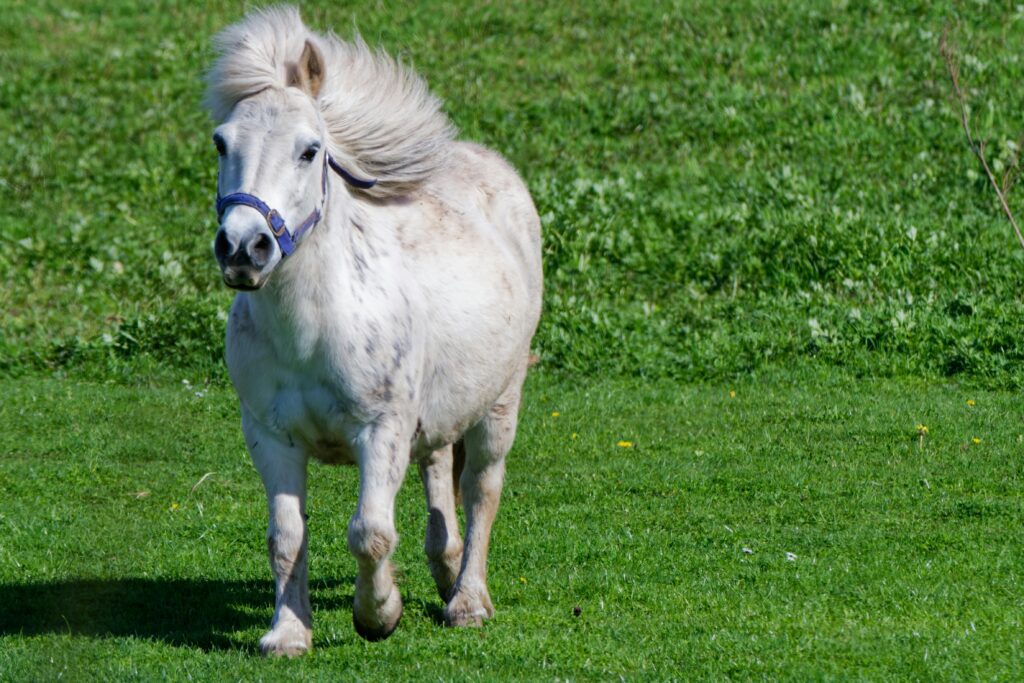
Practical Solutions for Horse Care and Breeding
1. Individualized Nutrition Plans
Breeding-specific diets will yield the optimal health. For example, lighter horse breeds will require more protein for muscle integrity, whereas heavier breeds must be provided with fiber foods to facilitate digestion and energy levels.
2. Standard Training Regimes
Regular exercise appropriate to the natural ability of a horse type will build stamina and discipline. For example, endurance horses like Arabians are appropriate for long-distance training, whereas draft types are appropriate for strength training.
3. Breeding for Purpose and Conservation
Responsible breeding helps preserve genetic diversity of the horse breeds. The breeders and farmers should not overbreed and focus on preserving the desirable traits such as strength, temperament, and resistance to diseases — making even small horses such as the Shetland Pony strong and pure.
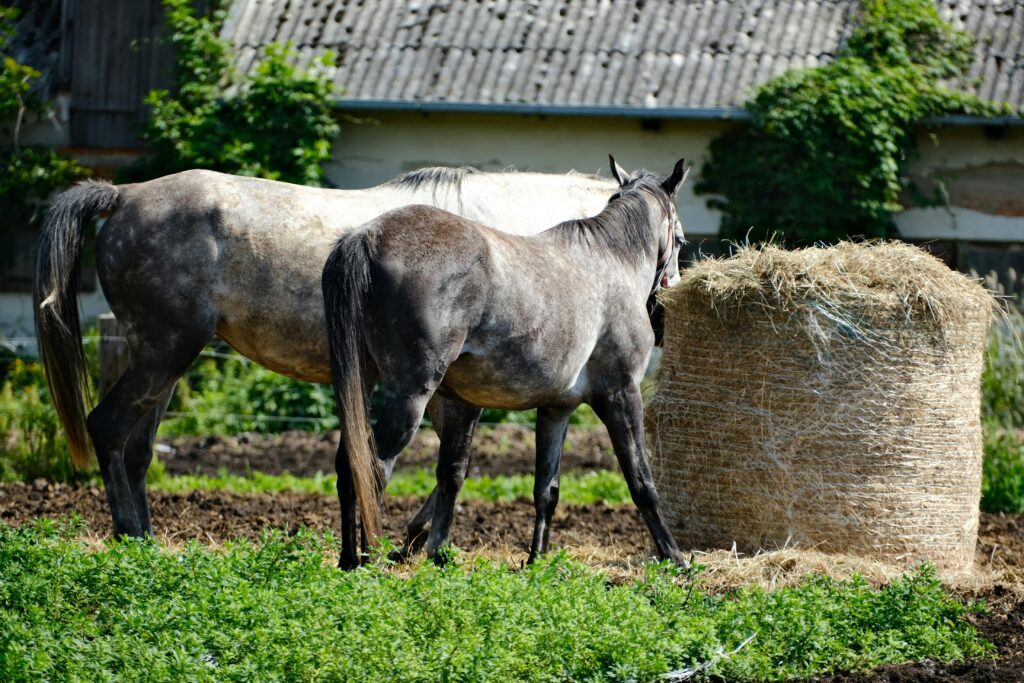
FAQs on Horse Breeds
1. What are the most common horse breeds utilized in agriculture?
In farming, there have been certain horse breeds found to be sturdy, full of energy, and dependable after working for decades in farms. The Clydesdale, Percheron, and Belgian Draft are the most common working horse breeds, equally renowned for their heavy pulling ability and being gentle too.
These draft horses were bred to plow fields, drag timber, and haul commodities over tough surfaces centuries ago when machines were not yet considered. Their muscular build and even disposition make them well-suited for labor that is demanding and tiring.
Of the lighter horse breeds, the Quarter Horse is also popular on smaller farms because of its quickness and willingness to respond, particularly when herding cattle. Larger breeds are the owners of the agricultural sphere with ponies like the Shetland Pony also having a significant contribution to make on smaller or family farms, being used for lighter work and carting.
The choice of the right breed depends on the farm size, load, and dominant climate in your area, but in all cases, the emotional relationship between farmers and such trustworthy horse breeds remains human harmony with nature.
2. How do I choose a suitable horse variety for my farm?
The choice of the right horse variety for your farm is a function of planning what you need, environment, and resource available to you. There is a distinct purpose for each type — they breed them for strength and resilience in some, and for running, agility, or friendship in others.
If your farm requires heavy labor in the fields of plowing, logging, or loading, heavy draft breeds like the Clydesdale, Percheron, or Shire Horse will be perfect since they have unmatched strength and a calm disposition.
If your farm requires lighter farm work or diversified farm systems, then the medium-sized breeds like the Quarter Horse or Morgan Horse are an excellent middle ground between strength and agility.
On a smaller farm or in a cold environment, the Shetland Pony is just as wonderful an option — it’s little, sturdy, and extremely efficient for its size. It’s also perfect for children’s riding and farm chores.
Lastly, with the knowledge of the specific traits of each horse breed in terms of temperament, climatic tolerance, and feeding requirements, farmers can choose a companion that not only boosts productivity but also establishes a long-lasting relationship based on trust and love.
3. Are Shetland Ponies easy to handle?
Shetland Pony is one of the easiest horse breeds to handle, and it is a favorite among beginner farmers and families. Having originated from Scotland’s harsh Shetland Islands, this pony adapted to survive in adverse weather on meager rations.
As a result, it has a robust constitution by nature and requires much less maintenance than larger horse breeds. Shetlands are satisfied with simple diets consisting mainly of grass and hay but must be closely supervised by owners since they gain weight very fast.
Daily grooming, hoof pick-out, and easy exercise are all necessary to maintain them in good health and happy. Due to their small size, Shetland Ponies need less space, so they are suitable for small farms or in cities.
They are also smart and friendly, but a little bit stubborn at times — and need to be treated gently yet firmly. Their trainability, resilience, and friendly nature qualify them as one of the top horse breeds for adults and children, with a balance of simple-to-maintain care needs and a spunky personality that thrills any farm or stable.
4. What are the best horse breeds for beginners?
For newcomers, selecting friendly and trainability of horse breeds is necessary in order to build confidence and learn basic riding or care skills. Among the top choices for beginners are the Quarter Horse, Clydesdale, and Morgan Horse, all with their gentle nature and reliability.
The Quarter Horse, for instance, is very versatile and sensitive, and it’s ideal for trail riding, farm work, and general recreational use. Clydesdales, notwithstanding their sheer size, are relatively tolerant and patient, with a steady and reassuring experience for beginners.
For children or toddlers, the Shetland Pony is a great horse breed that provides both companionship and learning of basic horse care. It covers responsibility without being so large to be safely handled. Temperament, training history, and health must take priority when searching for a good first horse.
Gentle horse breeds not only provide an easy learning experience but also create a good relationship between humans and animals — building lifetime respect and admiration for these magnificent creatures.
5. How important is breed information to horse owners?
Information about horse breeds is one of the most practical tools any horse owner should ever have. Each breed has unique physical, behavioral, and dietary attributes that dictate the way in which it must be cared for, trained, and utilized.
Such as, light horses like Arabians and Thoroughbreds need day-to-day exercise regimens to build endurance and maintain muscle tone, while heavier horses like Clydesdales and Percherons require more attention to joint maintenance and controlled feeding.
Knowing the nature of each horse breed helps owners modify their approach to grooming, housing, and feeding to accommodate optimal health and performance. Moreover, the recognition of early warning signs for breed-associated health issues — such as laminitis in ponies like the Shetland Pony — prevents possible complications.
Knowledge of breeds also allows for enhanced communication among horse owners, veterinarians, and trainers, leading to better management and stronger emotional relationships.
Lastly, knowledge of different horse breeds allows the owners to appreciate the individuality of each horse, ensuring happiness and productivity while preserving the diversity of horses.
Conclusion
From the majestic Arabian to the rugged Shetland Pony, every horse breed is a product of adaptation, utility, and friendship with humankind.
Learning about different horse breeds equips farmers, trainers, and riders with the information to make informed choices that are not only beneficial for the animals but for their caretakers as well.
Each breed of horse has its own strengths — for strength, stamina, or kindness — which contribute to the rich tapestry of horse diversity that continues to inspire human beings all over the world.
Ultimately, maintaining and appreciating these breeds ensures future generations the opportunity to continue working with, alongside, and in awe of these amazing creatures.
Whether you envision racing a Thoroughbred, owning a Clydesdale, or simply enjoying the antics of a Shetland Pony, there’s a horse for everyone — each a living reminder of strength, beauty, and elegance.
